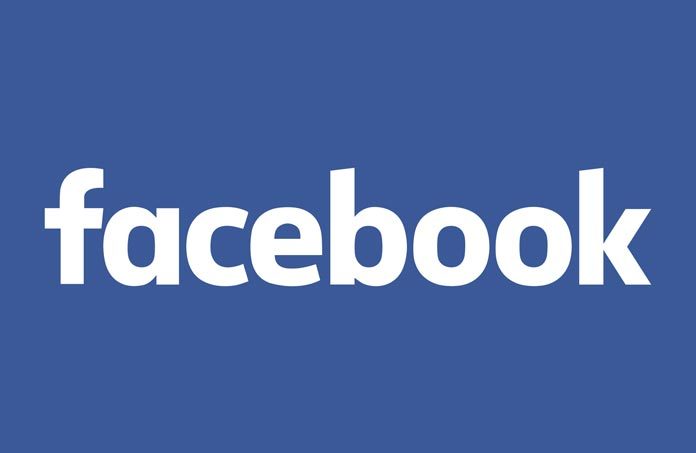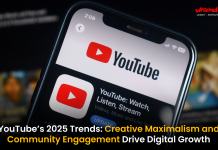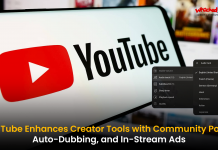Facebook has stayed popular worldwide for the last 16 years as the most used social networking site. Founded by Mark Zuckerberg along with fellow Harvard college students, Eduardo Saverin, Andrew McCollum, Dustin Moskovitz and Chris Hughes, Facebook is considered one of the four biggest technological companies in the world, along with Amazon, Apple and Google. The site was initially used by students of Harvard, Columbia, Stanford and Yale. However, since 2006, anyone claiming to be above 13 years old has been able to use Facebook.
It’s been 16 years since Facebook was launched and over the years, the social media platform has gone through many changes. Facebook evolved in so many ways and grew to become a social media powerhouse. It also became a preferred platform for many brands to advertise their products. Today, let us take a look at the journey of Facebook, as it evolved from a site meant for an elite group of students to a social media marketing powerhouse.
2003
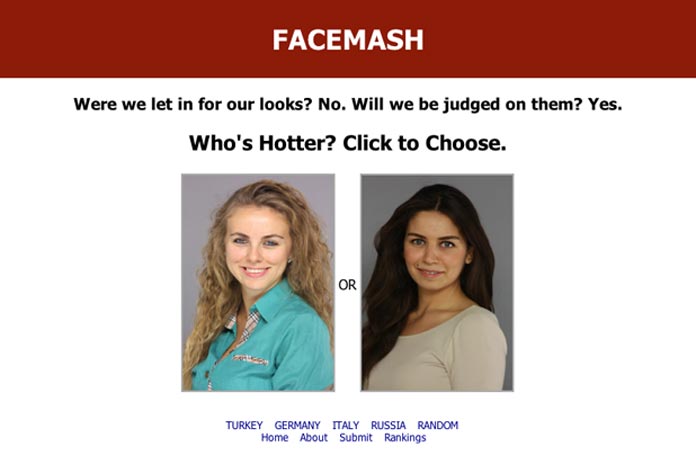
In 2003, Mark Zuckerberg, then a sophomore at Harvard University, built a website called Facemash. The site placed two photos of students studying at Harvard University and asked users to choose the hotter one from both the options. The site attracted over 450 visitors and 22,000 photo views in the first four hours of its launch. The site was shared among many campus group list servers, but was eventually shut down by the University administration. Zuckerberg was charged with security breach, copyright violation and individual privacy violation and faced expulsion. However, the charges were dropped against Zuckerberg and he expanded this project by creating a social study tool ahead of an art history final exam. Zuckerberg uploaded art images to a website accompanied with a comment section and shared the site with his classmates.
2004
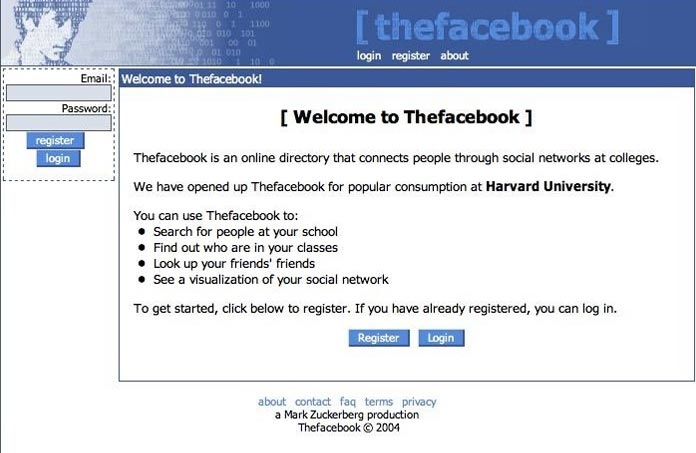
Inspired by an editorial article published in The Crimson about Facemash, Zuckerberg started coding a new website in January 2004 and named the site “The Facebook.” Along with a fellow Harvard student Eduardo Saverin, Zuckerberg invested $ 2000 in the site. Zuckerberg launched the site thefacebook.com on February 4 2004. After the launch, the membership of the site was restricted to the students of Harvard University and within a month, more than half the undergraduates joined the site. Zuckerberg was later joined by Dustin Moskovitz, Andrew McCollum and Chris Hughes to manage the growth of the website. Facebook expanded to Columbia, Stanford and Yale by March 2004 and eventually, to most universities in the United States and Canada. The Company moved to Palo Alto, California in June 2004 and received its first investment the same month from PayPal co founder Peter Thiel.
2005-2007
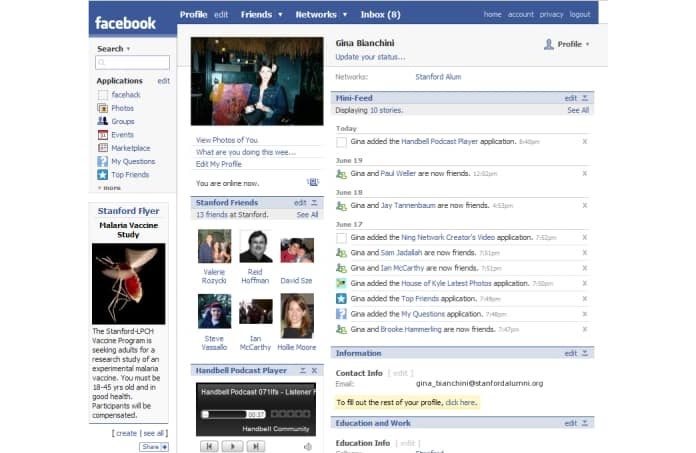
The Company dropped “the” from its name in 2005, after purchasing the domain name facebook.com for $ 200,000. The Company got an investment of $ 12.7 million and $ 1 million respectively from Accel Partners and Jim Breyer in May 2005.
2006 was a turning point for Facebook as the site opened to everyone over 13 years of age with a valid email address. By 2007, the site had over 100,000 business pages which became major sources for various companies to promote their products and attract customers. No other major changes happened in 2007, apart from the addition of Facebook Gifts. The feature allowed users to send and receive gifts like birthday and Valentine’s Day gifts. However, this feature was removed in 2010. The year 2007 was also when Microsoft invested $ 240 million in the Company and purchased 1.6 % share of Facebook. The purchase by Microsoft also included rights to place international advertisements on the site.
2008-2009
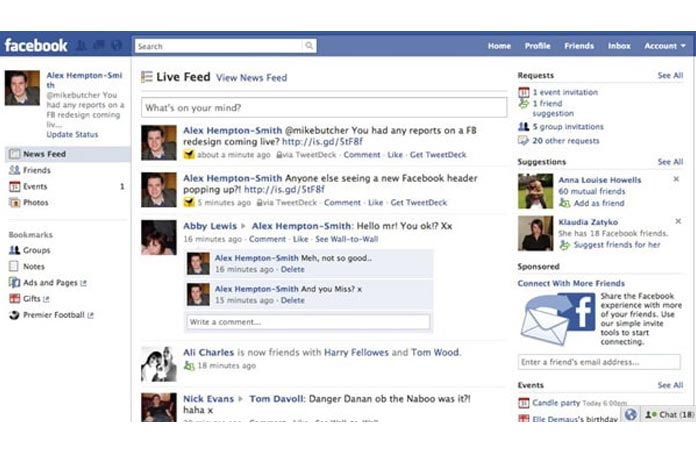
In October 2008, Facebook announced the opening of its international headquarters, which would be located in Dublin, Ireland. In 2008, the site also introduced apps on Facebook. This allowed users to add application tabs to their profiles and to update status, post images, etc., through the publisher toolbar. In 2009, fan pages became popular on Facebook, with users being able to follow any page of which they were fans and receive individual updates on their news feeds. In January 2009, Facebook was ranked as the most used social networking service worldwide, according to a study done by Compete.com. This was also the year when the Company was able to achieve a positive cash flow for the first time.
2010
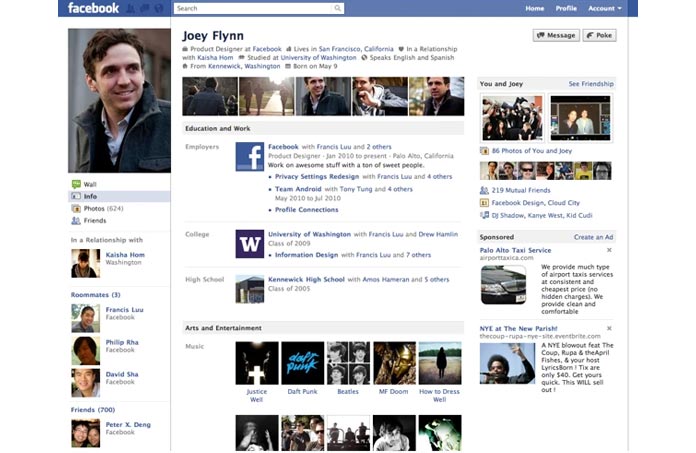
The Facebook profile page was redesigned in 2010. Facebook started displaying common information which users shared with their friends and a new photo banner was added to the website. There was a major surge in traffic on the Facebook website and the Company announced 500 million users in July 2010. According to the report, half of Facebook users used Facebook daily for an average of 34 minutes. Facebook became the most visited website in the second week of March 2010, ahead of Google. The Company also announced in November 2010 about it acquiring the domain name fb.com from the American Farm Bureau Federation for an undisclosed amount. The undisclosed amount was revealed by the American Farm Bureau Federation in 2011 as $ 8.5 million, making the acquisition of fb.com one of the highest priced domain sales in history. By the end of 2010, Facebook’s value was $ 41 billion, making it the third largest web company in the United States, after Google and Amazon.
2011
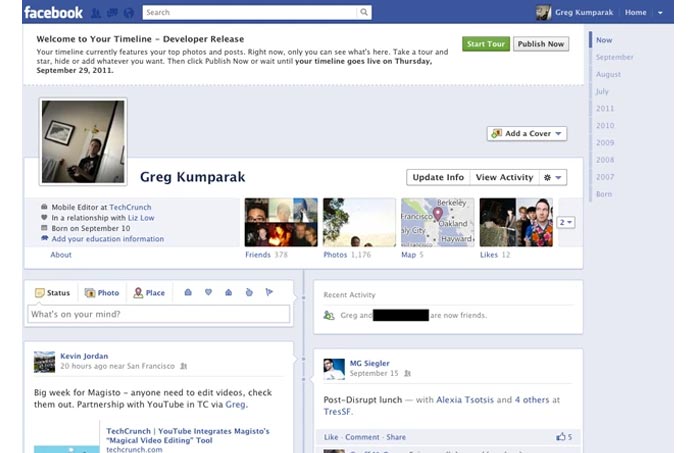
Facebook added the View As feature to its website in 2011, which allowed users to preview their pages the way it is visible to their followers. Facebook also introduced the timeline feature, ditching the wall concept. Another feature, Subscribe, was also introduced, which allowed the users to subscribe to various people and view their posts. It was reported in March 2011 that Facebook was continuously removing about 20,000 profiles daily from its website in an effort to strengthen cyber security. The profiles were removed for violations like spamming, graphic content and underage use. In the month of June, Facebook reached one trillion page views and became the most visited website tracked by DoubleClick, a Company which develops and provides internet ad serving services. It also became the second most accessed website in the U.S., behind Google.
2012
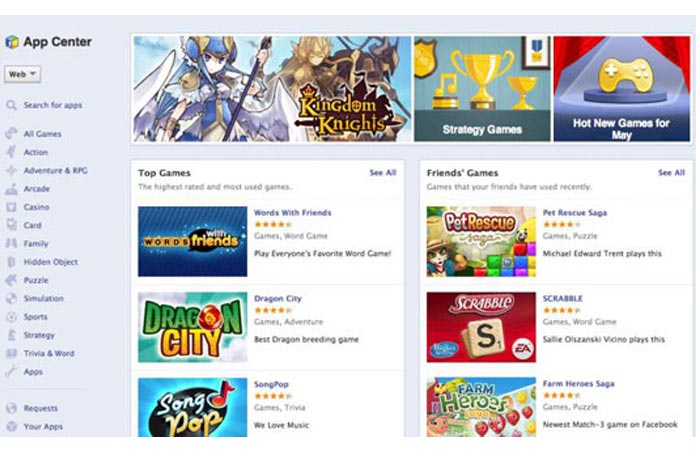
Facebook introduced the Facebook App Center in 2012. The App Center is an online mobile store which had 500 Facebook apps. The Facebook App Center was available on iPhones and Android devices. Zuckerberg acquired the photo sharing site Instagram in April 2012 for approximately $ 1 billion. In 2012, Facebook was valued at $ 104 billion and its Initial Public Offering (IPO) raised to $ 16 billion, making it the third largest in the history of the United States. In October 2012, Zuckerberg announced Facebook had almost 1 billion monthly active users, out of which, 600 million were mobile users.
2013-2014
Facebook, because of its 2012 income of $ 5 billion, joined the Fortune 500 list in May 2013 for the first time and was ranked 462. In April 2013, Facebook introduced Facebook Home, which is a user interface layer for Android devices and offered greater integration with the site. In the same month, the Company modified its logo and removed the faint blue line present at the bottom of the F icon. In June 2013, Facebook also announced the introduction of clickable hashtags, which helped users follow trending topics. Facebook also joined the Alliance for Affordable Internet (A4AI) when it launched and along with companies like Google and Microsoft, tried to make the internet affordable for people around the world.
However, Facebook, being an open platform, became a place for major abuse and hate speech and the Site seemed ill equipped to tackle this problem. Campaigns by various groups prompted Facebook to take some action and they admitted in a blog post that Facebook’s moderation efforts failed to work as effectively as they had hoped. Some of the measures taken by the Company were reviewing and updating the guidelines used to evaluate reports of hate speech and increasing the accountability of people running these hate groups.
Facebook celebrated its 10 year anniversary in February 2014 and in the same month, acquired the mobile messaging company WhatsApp for $ 19 billion in cash and stock. The same year, Facebook also bought the virtual reality (VR) company Oculus VR. Another big change which happened in 2014 was the removal of Messenger from Facebook’s main app. This resulted in users having to download a separate app, Messenger, to message on Facebook. The Company was growing financially and by September 2014, the market capitalization of Facebook exceeded $ 200 billion. According to reports, mobiles accounted for 62 % of the Company’s advertising revenue in 2014.
2015-2017
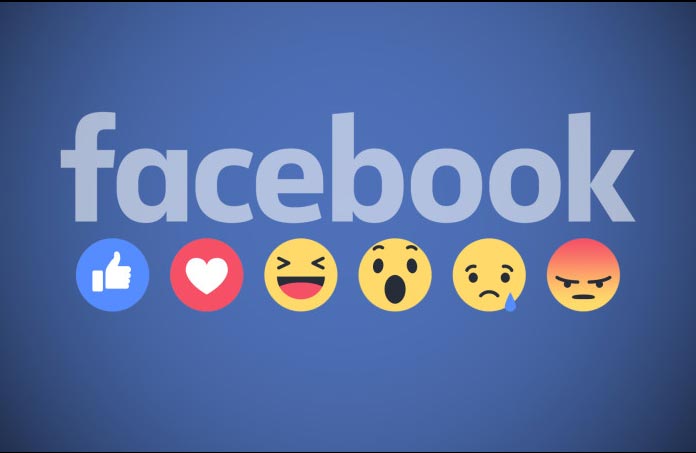
The year 2015 was a great one for Facebook financially, with the Company announcing a profit of $ 701 million for the year. A new feature added to Facebook in 2015 was reacting to posts on the platform. This feature allowed users to add reactions like “love,” “angry,” “haha,” etc., to a post. Facebook also started rolling out the instant article feature in May 2015. This allowed publishers to set up versions of their articles which were hosted directly by Facebook and allowed the publisher to get revenue through advertisements.
In 2016, Facebook announced it had 1.5 billion daily users and 3 million advertisers and made a profit of $ 3.69 billion in 2015. In the first half of 2016, Facebook made some changes to its algorithm which affected publishers’ and companies’ organic traffic on the site. The algorithm change allowed only posts from family and friends to show up in users’ feeds and kept posts and advertisements from companies to a minimum. In August, Facebook again made changes to its algorithm and allowed stories which were informative and aligned with the users’ interests to be presented to them. Facebook, in 2016, also released a new platform called Workplace. The platform was aimed at organizations and acted as an internal social platform for companies which employees used to communicate with each other. In September, it was revealed Facebook was publishing metrics which were misleading and the Company was forced to apologise.
The main issue the Company faced in 2015 was that of “fake news,” with the platform being flooded with fake news stories and false information. Facebook introduced a new feature in January 2015 which allowed users to flag any article as a “false news story.” If the articles were flagged enough times, a note was added for other users, informing them the article is flagged as being fake. However, this feature did not help in tackling the issue of fake news entirely and the issue of “fake news” became a serious problem for the Company in 2016. It was claimed the fake news published on Facebook contributed to the 2016 Presidential election in the United States of America. Initially denying the claims, Facebook announced their collaboration with fact checking organisations to combat the fake news issue and also announced changes in its policies to combat advertisements promoting such fake news.
Despite all these issues, Facebook continued making profits, the majority of which came from advertisements and brought in $ 10 billion in profits, with 1.86 billion people logging in every month.
The year 2017 was also a successful one for the platform, with Facebook making over $ 3 billion in profit. It was announced in June that Facebook reached 2 billion members. Throughout 2017, Facebook tried combating the issue of fake news with making slight design changes to its news feed.
2018-Present
The year 2018 was not good for Facebook as the news of Facebook collecting data from its users was made public. The Cambridge Analytica scandal took a huge toll on the Company, with Mark Zuckerberg appearing before the United States Congress. Despite the scandal, Facebook still managed to pull in a profit of $ 16.6 billion, with daily active users at 1.52 billion worldwide. Facebook has been growing in 2019 as well and recently announced its collaboration with University of California, San Francisco to create a device which will allow people to type by simply imagining them talking.
Despite various setbacks, Facebook has been growing ever since its inception. With many people preferring the social media platform to interact, companies are also using Facebook to advertise their products.
To learn more about Facebook advertising and how it works, feel free to reach out to us on mail or by leaving a comment below.

